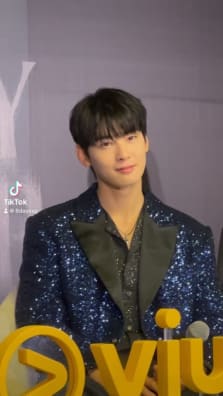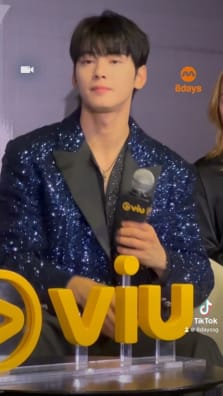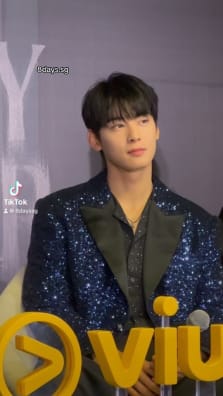An Archaeologist Tells Us What She Hopes To See In Gal Gadot’s Cleopatra Movie: She's More Than Just "The Mistress Of Julius Caesar And Mark Antony”
Dr Meredith Brand is one of the archaeologists featured in the latest season of Nat Geo's Lost Treasures of Egypt.
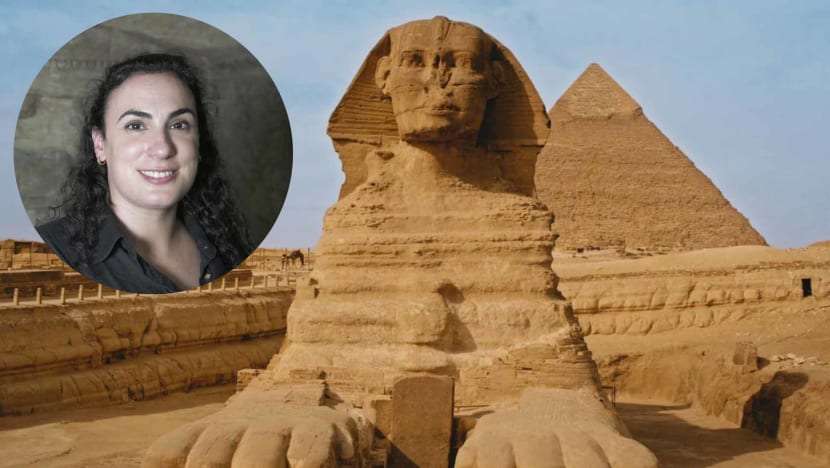
In Red Notice, that bloated and not-nearly-as-fun-as-it’s-hyped-to-be Netflix movie, Dwayne Johnson, Ryan Reynolds and Gal Gadot play treasure hunters seeking the three bejeweled eggs owned by the Egyptian queen Cleopatra, a gift from her Roman general lover Mark Antony on their wedding day.
Of course, those glittery, to-die-for MacGuffins are pure Hollywood hogwash, loosely modeled on the Fabergé eggs made for Russia’s Romanov imperial family in the late 19th century.
But seriously, what are the real-life Cleopatra-related treasures archaeologists would love to get their hands on?
Anything and everything, really because the life and times of Cleopatra are still shrouded in mystery. For starters, her final resting place is considered the Holy Grail of archeology.
“People would love to know [where she is buried],” says Dr Meredith Brand, an American Egyptologist and archaeologist currently based in Egypt, and one of the scholars featured in the third and latest season of the National Geographic Channel docu-series Lost Treasures of Egypt.
“Finding her tomb would change history,” Dr Brand, who’s stayed in Egypt on and off for close to 20 years. “It would be a completely new discovery where we would understand her and her reign, and what happened in a completely different light. And, of course, in Lost Treasures, we see [fellow archaeologist] Kathleen Martínez searching for Cleopatra’s tomb.”
Is there anything else on their wish list? “It would be really nice [if we can find] some texts from Cleopatra to see some administrative documents or historical documents with her name on them.”
As for Dr Brand, she’s into lost cities. “Any kind of city would be coolest things because ancient Egyptians basically lived where modern Egyptians live now — along with this thin ribbon of land along the Nile Valley,” she says. “So any city, any house, anything like this is the Holy Grail for me."
Speaking to 8days.sg over Zoom from Cairo just days before she’s off to another expedition in the desert, Dr Brand (who’s featured in Ep 4’s ‘Rise of the Mummies’) shares more about her profession, especially how the study of the Pharaoh’s afterlife rituals affected her personally.
8 DAYS: Lost Treasures of Egypt is now in its third season. How many more seasons can the show go on before it runs out of lost treasures?
DR MEREDITH BRAND: There are so many lost treasures still to be found. If you imagine, from ancient Egypt up to [the reign of] Cleopatra, this is more than 3,000 years and it’s a bunch of people living [during this period]. Their houses, their temples — all the burials for these millions of people that would have lived in this vast amount of time. And the settlements were really limited along the Nile Valley — you got the river, and then you have the 10km or 15km on either side that has green fields, so it’s all squished together in one long ribbon. So, it’s just layers upon layers of archaeology, and there is tons of stuff to be found still.
And how much treasure have you found yourself?
On one level, you have surveying in archaeology where you go out and walk, and you make maps and record what you see on the surface. With this, you can find so much really fast because you’re just looking and walking and recording. But excavation itself is a super slow process. The actual process of revealing things is a bit slower. For myself, I’ve been in the process of excavating. I’ve worked at a small chapel, a temple of a new kingdom king called Thutmose III in Abydos, and that was really cool — to see this be uncovered and the area around it. But my favourite project is a mining site way in the desert, where they were mining amethyst — a purple stone — and gold. We excavate the city of the people that lived there. You can reveal the dirt, and you can see how they lived. You can see their houses, you can see the remains of what they ate, you can see their garbage, and you can get almost a picture of what life was like in ancient Egypt. So that’s really cool.
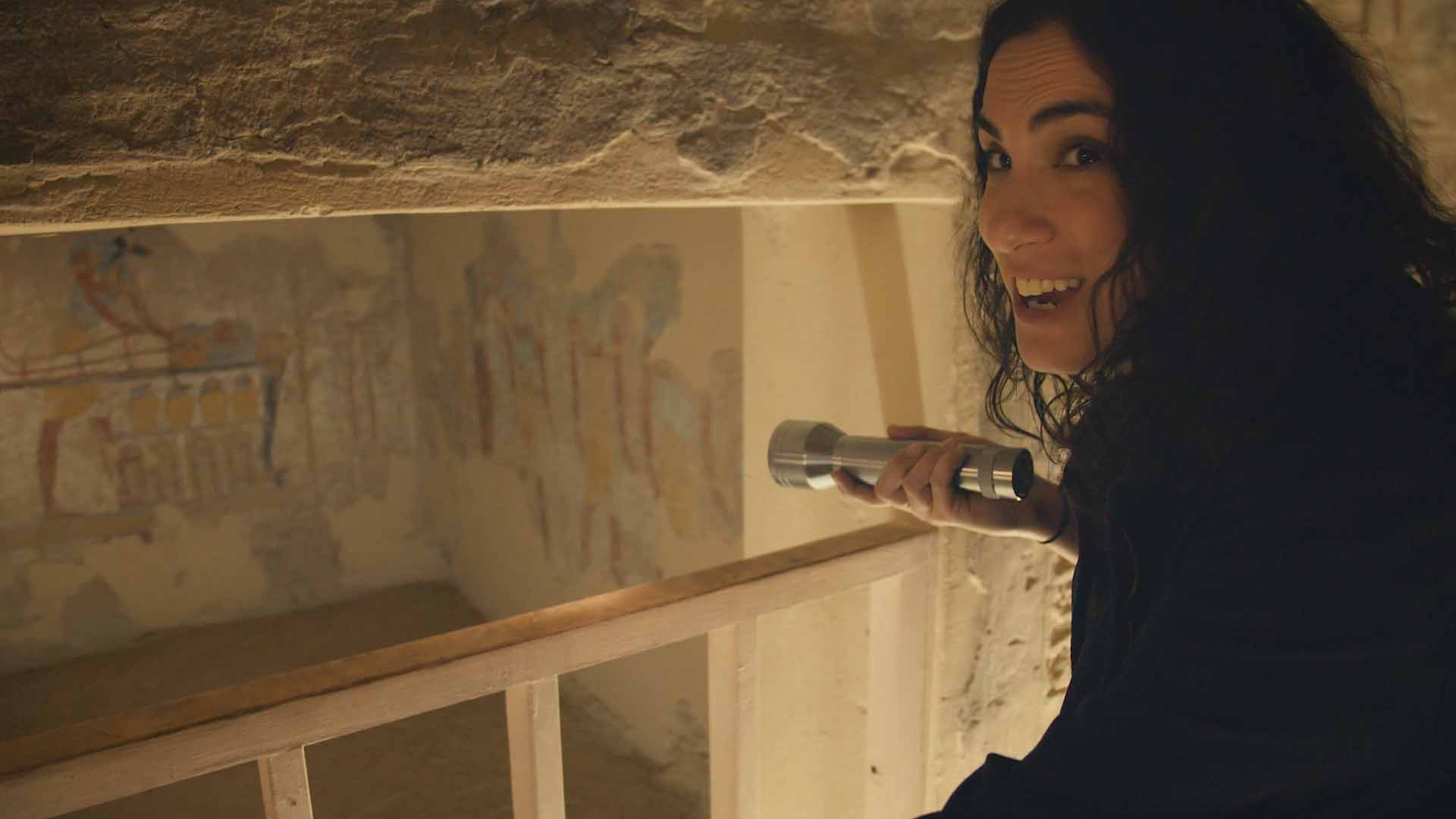
Secrets unlocked: Dr Meredith Brand shines the torch into a room containing wall paintings. Dr Brand is the assistant director of the Wadi el-Hudi Expedition, a project that focuses on amethyst mining sites and settlements in the Eastern Desert, dating to the early Middle Kingdom and the Greco-Roman period.
You are a ceramicist. What is the most surprising thing you learn about the ancient Egyptians from the pottery excavated?
Ceramics tell you everything you could possibly want to know about life in ancient Egypt. They’re virtually indestructible. They’re in every area of an archaeological site and they change in style over time. So, we use them to date the different parts of an archaeological site — essentially, most activities that ancient Egyptians did that revolved around cooking, storage or daily life activities use pottery. The amount of information, and the sheer data I've been able to collect from pottery has been the most surprising thing and continues to surprise me.
Aren’t you worried about hexes and curses when you discover a pharaoh’s tomb? Would you consider that as a potential occupational hazard?
No, I’m not worried about hexes (laughs). I mean, if you were an ancient Egyptian, you’d probably be, to some degree, worried about it. But ancient Egyptians robbed tombs! Ancient Egyptians were actively involved in tomb robbery, so of course, there were some people that would have been legitimately scared of these curses. But ancient Egyptians themselves to some parts were not, because they robbed the burials of their own pharaohs a couple of hundred years after they died. So even in ancient Egypt, there were some skeptics. For me, I’ve just been around so many mummies and excavations that if anything, it’s not scary. It’s more moving, and kind of touching because you know this is a person, and they had their full life, and that’s the kind of emotion that’s more pressing rather than fear.
Speaking of mummies, no ancient Egypt documentary is complete without mentioning them. Why are we obsessed with them?
If you think about it, even since the start of Hollywood, mummies were some of the first movie subjects in the 1920s. We’re so fascinated with it because we’re fascinated by death! I mean, this is something we all face and deal with, and to see a completely different practice of preserving bodies and how ancient Egyptians faced this concept of the afterlife is endlessly fascinating. It’s something that we feel an affinity with because we struggle with our own mortality. And to see what someone else is doing so differently is fascinating. But also, mummies are really cool because you can see the remains of the person! If you go to Egypt, you can visit National Egyptian Museum of Civilisation and look at Ramesses II — you could see what he would have looked like. I mean, how many rulers from the past can you actually look at them and be like, “That’s their hair and that’s their face, and I can see what their chin was like.” And that brings it alive in a completely different way.
Has all this talk about the afterlife rituals affected your personal take on the topic?
I really like the way the ancient Egyptians thought about it. They were rather advanced in their time. A lot of other ancient civilisations thought the afterlife is a very horrible, terrible thing. Like you die and it’s just miserable after it. If you think about Odyssey where Homer sees Achilles in the underworld being miserable. Ancient Egyptians were the complete opposite. They were like, “This is going to be fantastic.” And I think that’s a great way of looking at life, to say that the unknown can be amazing, and to look at it in a positive light. That’s a great thing to take away.
On the show, you said you became interested in archaeology after a visit to the British Museum in London when you were seven. Were there things in pop culture that inspired what you do now?
The museums themselves inspired me, but when I looked at pop culture stuff, I didn’t see myself in Indiana Jones. I don’t like to run (laughs). That’s not what I like to do; I didn’t see myself in that kind of way. It was just more like, “Oh, these objects are really cool, I’m so interested in this, I want to learn more.” I was more inspired by the things from ancient Egypt itself. And I think a lot of people would see the movie portrayals [of archaeologists] as romantic and glamorous, but I think of it as just a big hassle and I would not want to live that kind of life (laughs). It seems miserable. I wasn’t inspired by that part, personally.
That said, what are your pet peeves on how archaeology and archaeologists are depicted in pop culture?
Archaeology is a really slow process and it takes a lot of research and a lot of time. We have to study, and write constantly. Of course, for film, you want to make things exciting and so archaeology is shown as an action-packed adventure where everything moves really fast. But in reality, it's a slow-paced, dedicated endeavor; [if I] as a viewer [were to watch that], I would be so bored by seeing people sitting in a library reading books constantly. But that part of archaeology is the most important thing, and it's really very rarely shown.
There’s going to be a new Cleopatra movie starring Gal Gadot. As an archeologist, what do you hope the movie should entail?
I think it would be really interesting to focus on Cleopatra as an intelligent, competent, and powerful leader with a very complicated relationship with her own family. Everything [about her in pop culture] is just so entwined with the Julius Caesar and Mark Antony business. The end of her reign is also the most emphasised. Of course, they’re the most dramatic parts, like, it would make sense [to highlight them]. But I’d like to get a sense of who she was and the culture that she came from, rather than her entangled love life. I’d love to see who she is as Cleopatra [as a person], not as the mistress of Julius Caesar and Mark Antony.
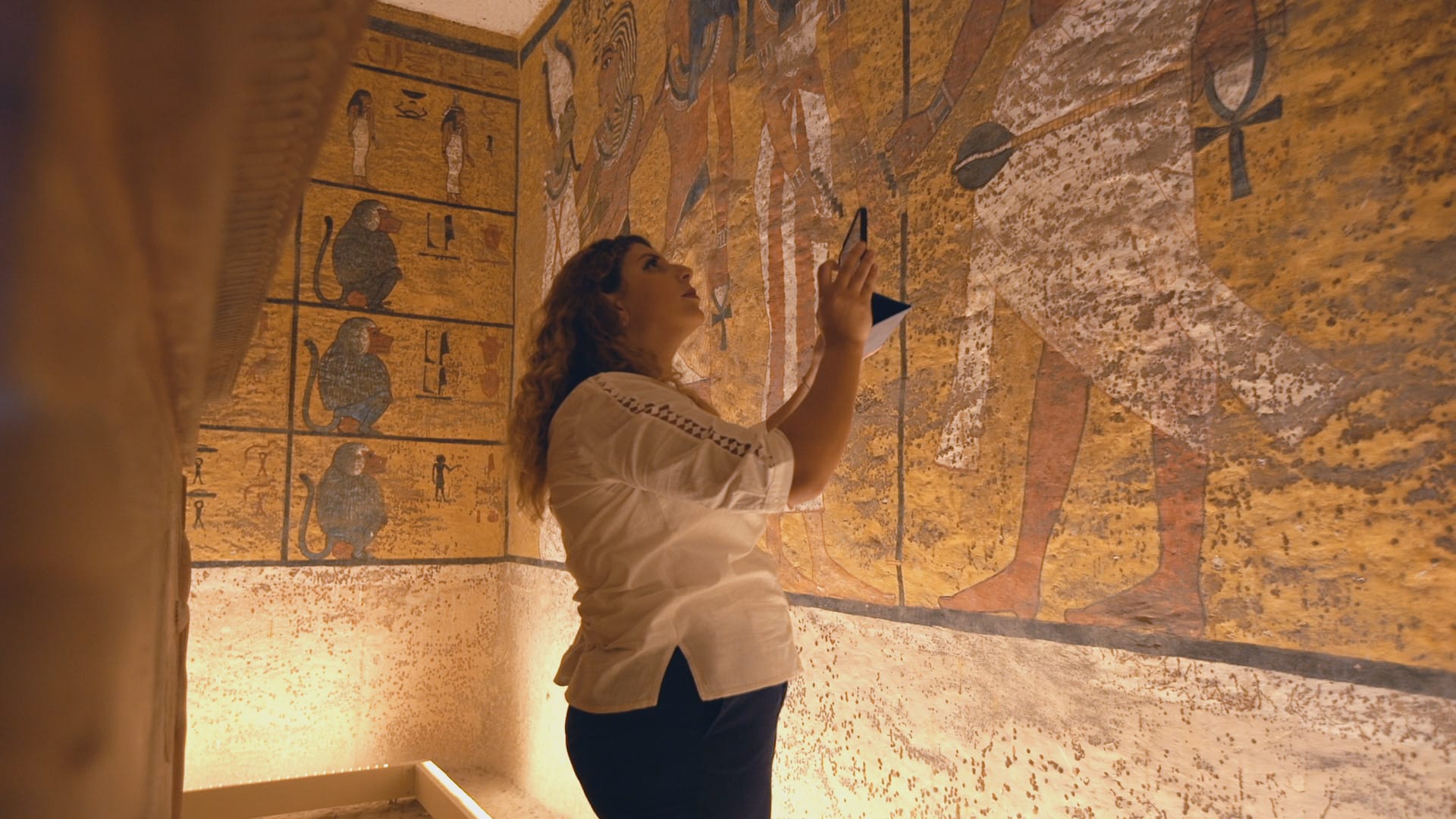
Writing on the wall: Egyptologist Aliaa Ismail examines Tutankhamun's tomb walls in Ep 8's 'Cleopatra, Egypt's Last Pharaoh.
My wife and I actually have two cats with names rooted in ancient Egyptian mythology — Benben and Bennu. If we were to adopt a third cat, what should we name it?
Maybe Bastet? That’s the cat goddess connected with ancient Egypt. Maybe that would be a fun one because that’s also a B sound, so they’d be all Bs. The ancient Egyptians would be happy. They loved pets and they loved animals, so definitely they would be happy with your cats and you naming them after ancient Egyptian [mythological characters] (laughs).
Season 3 of Lost Treasures of Egypt airs Thursdays, National Geographic Channel (Singtel TV Ch 201, StarHub Ch 411), 9pm. It’s slated to stream on Disney+ in February.
Photos: National Geographic Channel





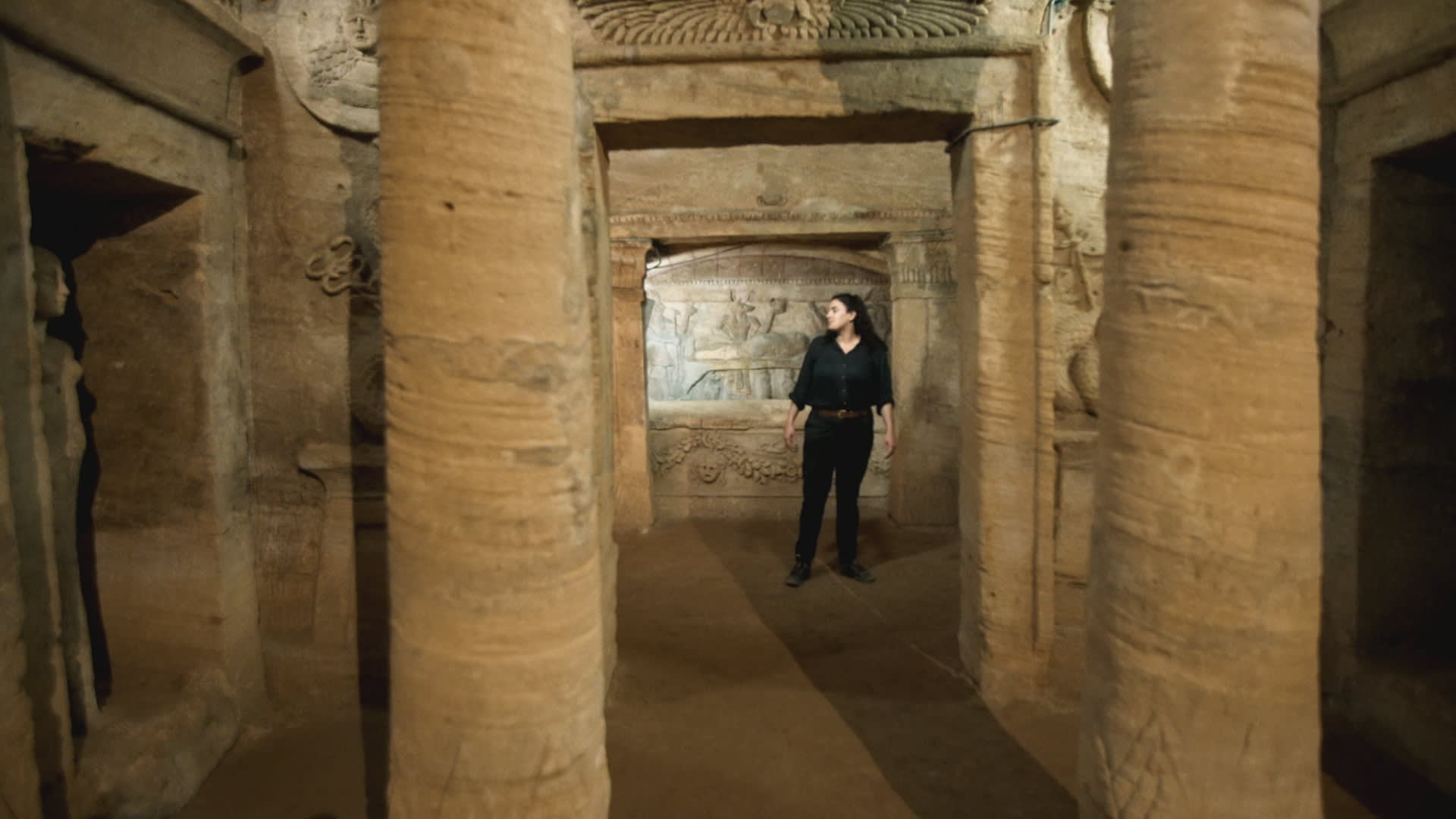

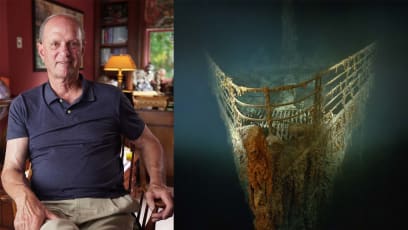
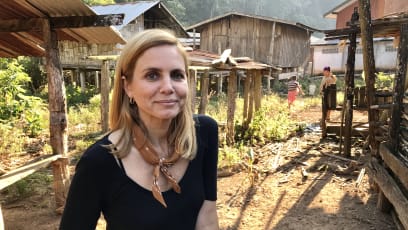





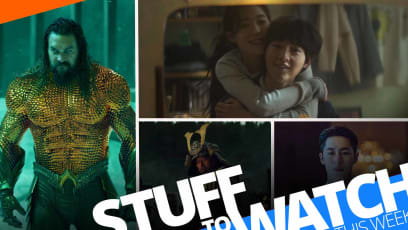

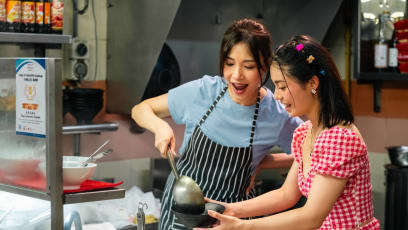
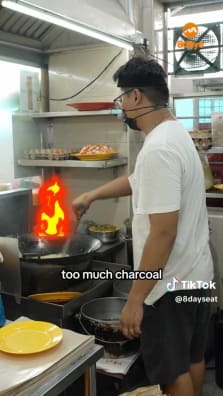

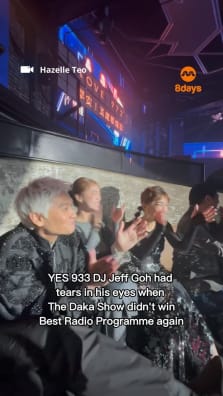
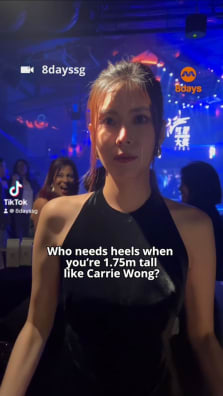

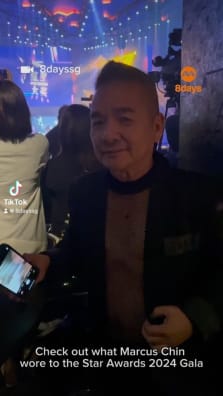
![We stan a kind-hearted boss with a good heart! 💕 Link in bio to read more
📍Rui Ji Chicken Rice
Blk 93 Toa Payoh Lor 4,
#01-48, S310093
📍148 Beach Road,
#B1-01 The Gateway,
S189720
📍Blk 305 Ubi Ave 1,
#01-179, S440305
[till 16 Apr 2024]
https://tinyurl.com/5dudypkh](https://onecms-res.cloudinary.com/image/upload/s---y3eV-Ts--/c_fit,h_396,w_223/f_auto,q_auto/v1/8days-migration/17999638880322602.jpg?itok=Tiqm3SVR)

